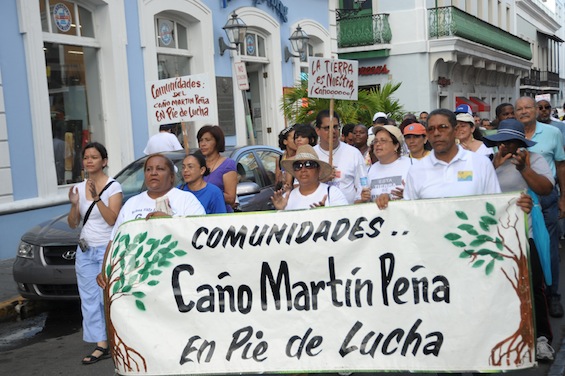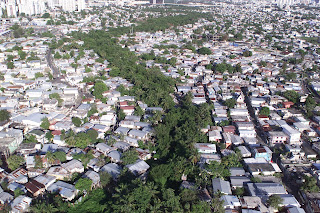Several weeks ago, I finished my doctoral dissertation. The process leading to the end was fierce, exhausting and emotional. I have never pushed my mind so hard that some experiences seemed to be happening to someone else, as if I could see moments passing by from a different vantage point. Amidst the productive confusion, “loosing it” took on multiple meanings involving personal, professional and literary repercussions.
Part of what I lost were some paragraphs that did not make it into the final version. Reaching the finish line in one piece meant letting go of words and fears, and being receptive to constructive critiques coming from friendly and expert voices. So here is a chunk that was extracted and later replaced. It is a draft preface that did not make the final cut but clearly illustrates what I did for six years and some of the lessons accrued along the way. If this work interests you, drop a line and I will be happy to share more.
Empowering Cooperation: Dominican Hometown Associations and the Politics of Transnational Community Development
This dissertation analyzes how three grassroots organizations engage in community development across borders. The protagonists are committed leaders hailing from the Baní region of the Dominican Republic who labor intensely from home and migrant communities to address myriad development needs, primarily in their towns of origin. Their efforts and accomplishments are impressive and extensive. In a span of four decades, they have built and administered schools and health clinics, constructed roads, ensured the provision of potable water, established educational scholarship programs, addressed public security issues, started microenterprises and even managed a small, rural municipality. And the list goes on. As a development scholar and practitioner, what made these hometown associations (HTAs) particularly interesting objects of study were not only the types and number of finished projects, but the stories behind them: the strategies they have employed to get things done, how they muddle through complex challenges, and the consequences of their hard work.
The research highlights how several HTAs from the Baní region were able to define development goals, design and implement projects, as they monitored and evaluated their efforts, and learned from their mistakes. In this process of engaging with transnational community development, the associations have spurred new institutional practices, transformed state-society relationships and ushered in opportunities for state and organizational learning. Interestingly, many of the development lessons emerge from a trial-and-error approach that builds on the practical experience amassed by a diverse set of development actors.
In many countries of the Global South like the Dominican Republic, “development” has been a consistently unfulfilled promise made by those in power. Authoritarian legacies, fiscal insufficiencies, widespread corruption and deep partisan divisions have long been the cited causes behind the country’s development misfortunes. Most poor communities have suffered greatly while they wait for public agencies to honor their stated commitments. Nevertheless, a handful of rural towns and their HTAs have found innovative ways to break long-standing patterns of neglect, by bootstrapping a series of transnational community development projects.
Inspired by a rich tradition of communal farming and relying on the drive of budding civic groups, these associations began to design interventions and make claims in favor of their hometowns during the early 1970s. Their approach was uncomplicated: rather than waiting for the state to solve their problems, they would begin to undertake projects on their own. Despite their autonomous inspiration, their goal was not to pick up the state’s slack, but to draw their attention to their demands. This was an especially complicated task, especially during their early years, when critics of the regime were persecuted and signs on visible public infrastructures warned “Only President Balaguer can do this”. Through a series of ingenious political tactics, they were able to attract state investments into their hometowns, and eventually establish partnerships that generated unique opportunities for collaborations between state and civic actors.
The Dominican migrant experience is a prominent theme in this account. Shortly after Rafael Leonidas Trujillo’s authoritarian and barbaric regime (1930-1961) came to an end, many poor Dominicans who had grown tired of waiting for development to arrive packed their bags and left their rural towns in search of new opportunities. From that moment onwards, migration would become a defining characteristic of Dominican life. The initial waves left the countryside for the capital city, and later emigrants arrived in the United States. But for many banilejos, starting a new life somewhere else did not mean forgetting about the places and the people they left behind. While residing in Santo Domingo, New York and Boston—toiling long hours in mostly blue-collar jobs—they came together to renew a rich associational tradition and collectively support the towns they still called “home”.
Financial contributions from afar have been essential to the development of banilejo hometowns and the country as a whole. But beyond sending money home, migrant HTA members also remit project and development ideas inspired by their experiences abroad. Their different outlooks on development help stretch the boundaries of what is possible, generate new opportunities to experiment and learn from the execution of transnational projects, and nurture an important exchange of cross border knowledge on community development. Nonetheless, migrant proposals also spark passionate debates that reveal the relationships of power that lie at the center of cross border community development efforts.
Much like the development strategies of the HTAs under study, my analysis crosses several borders—primarily disciplinary ones. Inspired by the critical scholarship on the migration-development nexus, I make use of a broad definition of development that moves beyond the standard economic metrics and pays attention to political, social and place-based dynamics. This conceptual approach allows me to shift the emphasis of the discussions from how much development occurs to what kinds of development processes emerge when state, migrants and non-migrant actors engage in complex community projects*.
Taking development processes seriously reveals important commonalities and differences in how the HTAs under study have advanced and executed their goals and projects. In order to make better sense of their distinct trajectories, I examined their internal organizational practices, and their engagements with state and non-state development actors. During a six-year span, I gathered data in the United States and the Dominican Republic, mostly interviewing knowledgeable individuals, attending meetings, observing the evolution of projects, poring over documents, and getting to know the communities. These interactions allowed me to gain a thorough understanding of how these HTAs operate and how they make community development happen.
The field data revealed some engaging insights. Some of the most impactful projects and development effects came about when migrant and home country HTA chapters were able to establish transnational cooperation networks that allowed them to establish a common set of goals and set collective development agendas, and when local community leaders were empowered to play a protagonist role in the definition and execution of projects, especially those produced in collaboration with the state and other development agents. In short, how sociopolitical relationships were developed, both within and beyond the organization’s ranks, had a significant impact on their development trajectories.
Moreover, paying careful attention to the evolution of several projects also brought to light how HTA members solve complex development problems. More often than not, the organizations are unable to rely on technical assistance from development experts or the financial support of targeted programs, so they experiment and troubleshoot their way through numerous challenges. This approach frees the organizations from the limiting parameters of generic development agendas imposed from above, and allows them to engage in a constantly evolving learning practice that strengthens their execution capabilities. Important process innovations arise under the “rule of non experts”, but figuring things out through trial-and-error inevitably leads to some missteps. Experimental projects exhibit varying degrees of success, so HTAs must also learn to decipher creative responses to unforeseen obstacles.
In telling this elaborate development narrative, my intention is to move past defining or promoting a model that could be replicated in communities across the globe. Throughout my time in the field, I have been constantly impressed by the tenacity, resilience, dedication and drive of these associations. Many of their accomplishments are monumental, and could very well be identified as best practices for community development. Nonetheless, what makes their stories unique, and what continues to amaze me about their work is something else: it is their ability to turn the development process into a ceaseless and often fruitful search for new possibilities.
*This analytical distinction was inspired by Evan’s (2001) work on the role of states in industrial transformations.


